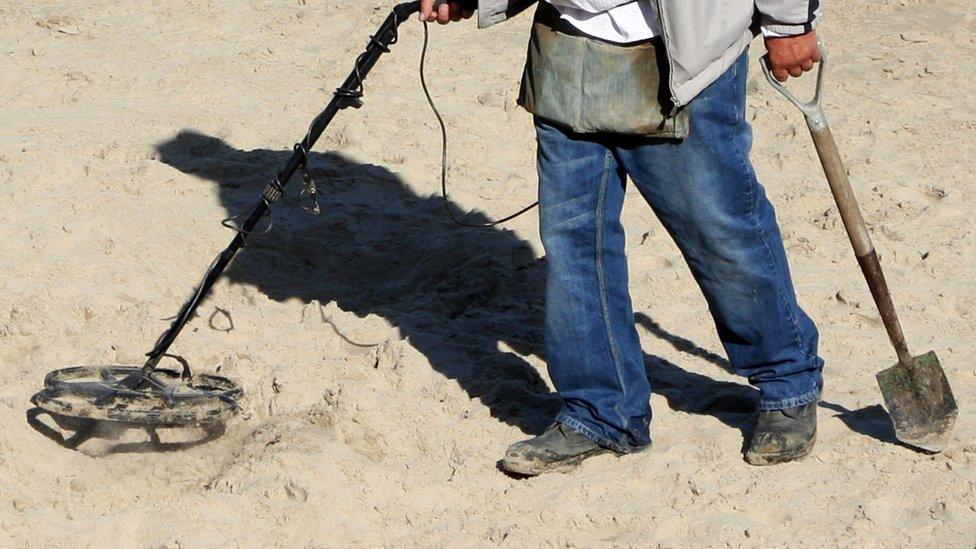Metal detecting helps increase treasure finds in Wales
- Published
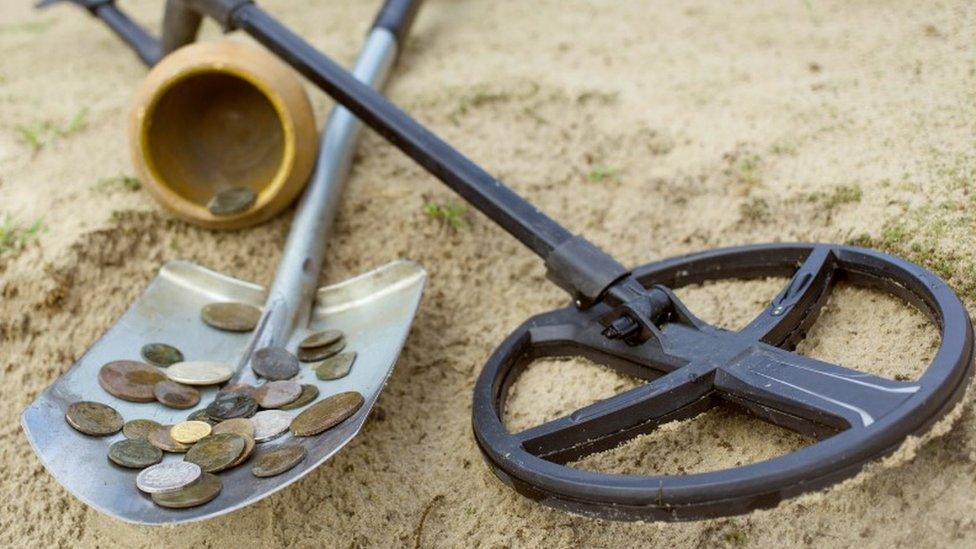
The number of people finding treasure in Wales is increasing as metal detecting becomes a more popular pastime, archaeologists have said.
National Museum Wales experts said they had seen a year-on-year rise in precious items reported, such as Bronze Age and mediaeval artefacts.
South east Wales, Wrexham and southern Pembrokeshire are hotspots for ancient discoveries.
About 90% of artefacts are found by metal detectorists.
Dr Rhianydd Biebrach said: "We have certainly noticed over the last few years that the amount of treasure finds reported in Wales has increased.
"I guess it's partly the popularity of metal detecting which is growing. It's had a lot of publicity from things like [Channel 4's] Time Team and the BBC series Detectorists."
Dr Rhianydd Biebrach on the treasure found down a rabbit hole
But she also said the introduction of the Treasure Act 1996 had helped as it gave a clear definition to what was deemed to be treasure.
It also made it a legal obligation for potential treasure to be declared to the coroner, with any money generated from the sale of the item given back to the finder and the land owner.
"I think people are becoming more aware of the treasure reporting process and that they are perhaps willing to trust that when they report finds that they're going to be dealt with in a proper way and museums aren't going to be stealing things off them," she added.

What is treasure?

A 16th or 17th Century gold ring and a spearhead found in Wales
In England, Wales and Northern Ireland, all finders of gold and silver objects, and groups of coins from the same finds, more than 300 years old, have a legal obligation to report such items to the local coroner under the Treasure Act 1996, external.
If a coroner declares it treasure, it will be couriered to the British Museum in London where a fair and current valuation will be given for it.
In Wales, the National Museum Wales has the right to buy the treasure. It also helps local museums acquire a significant proportion.
The money made from the sale of the treasure is then split 50-50 with the finder and the land owner.
Even if archaeological finds are not treasure, it is still important to report them so that they can be added to a database under the Portable Antiquities Scheme, external.

The museum is actively working with metal detectorists with the Saving Treasures; Telling Stories, external project, with help given from the Heritage Lottery Fund to ensure that local museums can buy treasure found in their areas.
Dr Biebrach, project officer for Saving Treasures, said the majority of Welsh treasure was found in the Vale of Glamorgan, Monmouthshire, Wrexham and southern Pembrokeshire.
"I think that reflects where historic population centres have been," she said.
"The things found range from the Bronze Age period... axes, weaponry, those kinds of things.
"And we also get a lot of medieval items like jewellery, rings, brooches, various things like that."
Dr Adam Gwilt, principal curator of prehistory at the National Museum Wales, said "year-on-year" the number of treasure items reported had been increasing since the introduction of the Treasure Act.
Some 40 items found in 2016 were currently going through the process to be declared treasure, he added, and he hoped reports of finds would continue to rise.
"Hopefully, people will feel that the archaeological heritage of Wales is as important as perhaps our ancient monuments and that we're caring for them for the future so that people in the future can enjoy them as well," he added.
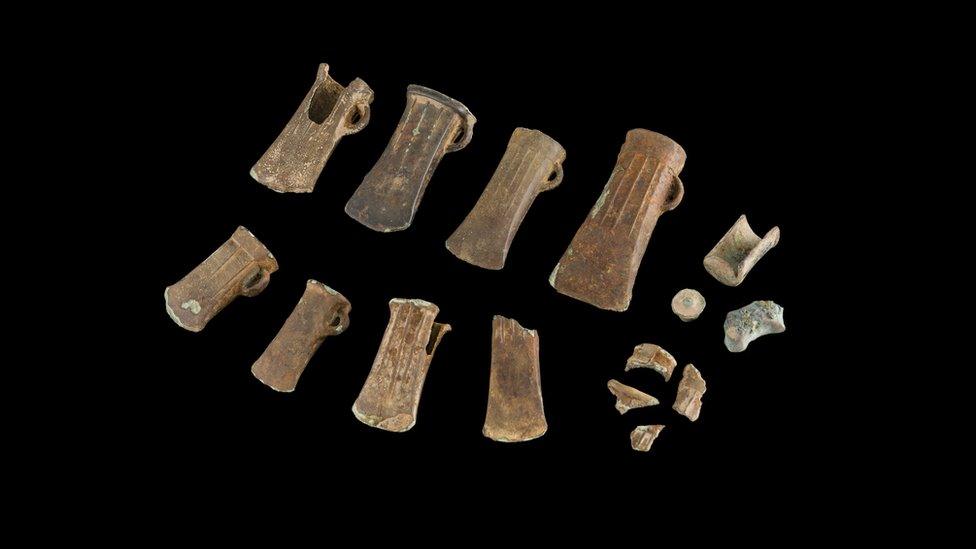
Bronze axe heads and a spear head
- Published30 April 2017
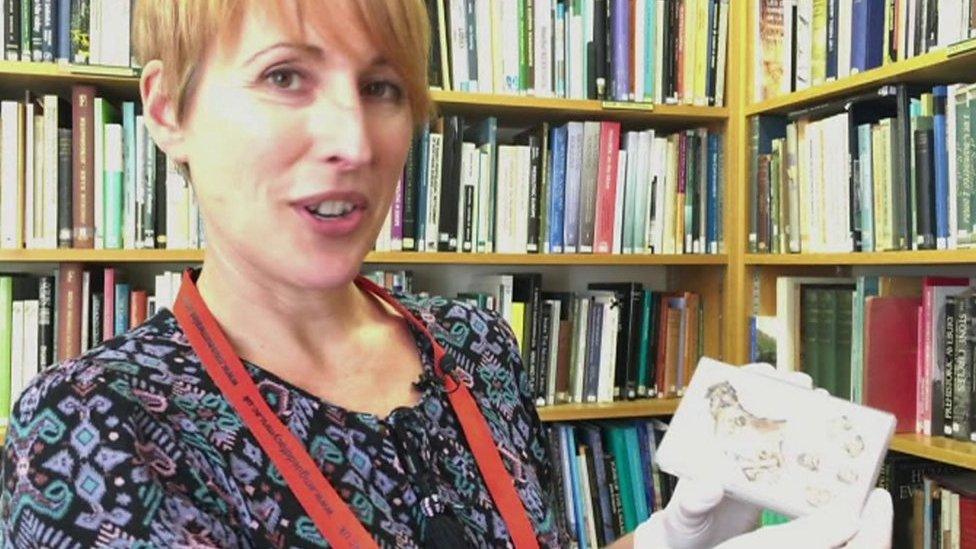
- Published7 April 2017
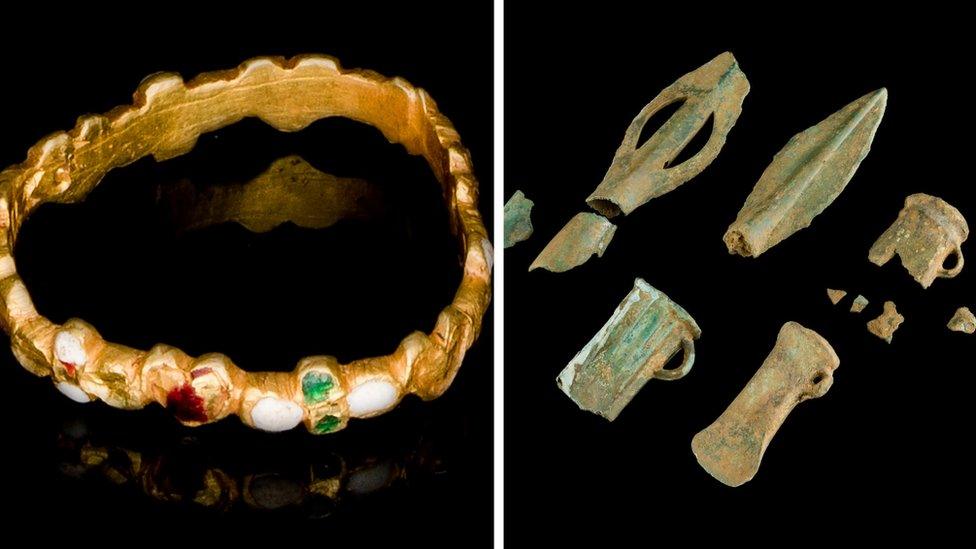
- Published19 September 2016
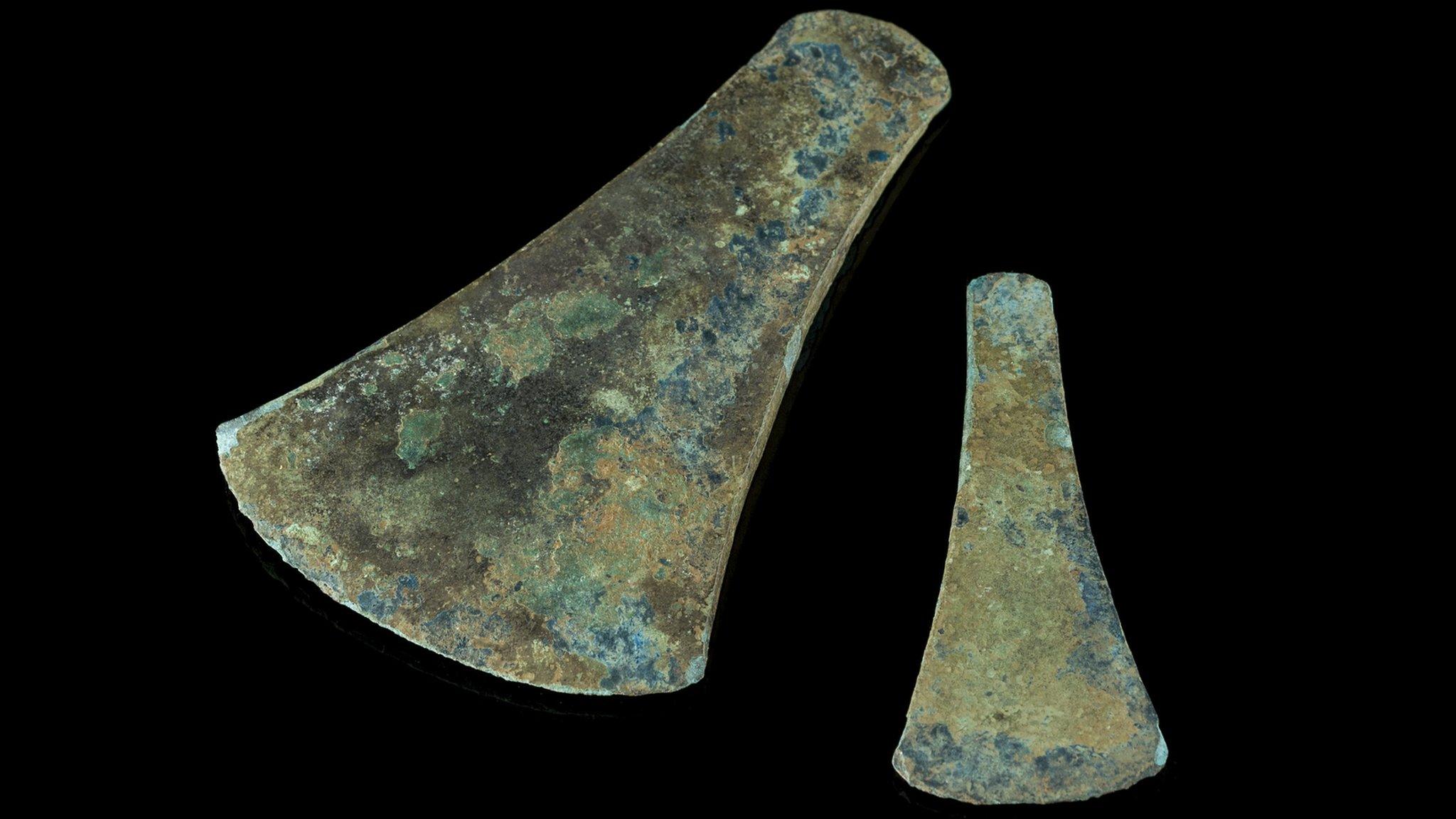
- Published19 August 2016
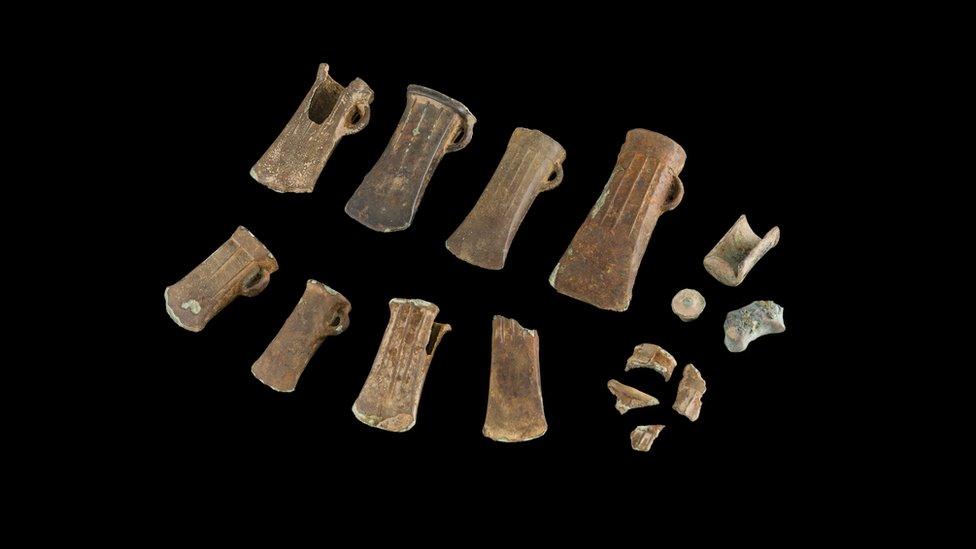
- Published11 August 2014
- Published14 October 2014
